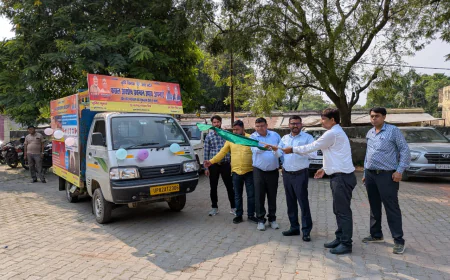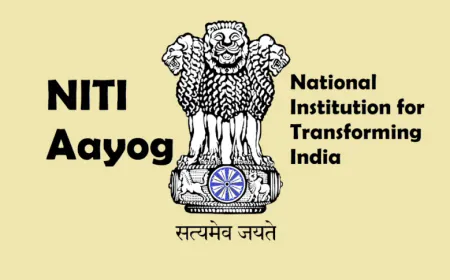78 years of Agriculture Reforms: Remarkable Journey of India in Agriculture Since Independence

78 years of Agriculture Reforms: Remarkable Journey of India in Agriculture Since Independence
India's journey in agriculture since independence has been a remarkable and transformative one, marked by a series of reforms and policies that have reshaped the nation's food security and economic landscape. From a country grappling with food shortages to becoming a major global producer and exporter, India's agricultural reforms have been a cornerstone of its development story.
The Foundation Years (1947-1960s): Land Reforms and Building from Scratch At the time of independence, India's agricultural sector was characterized by low productivity, an exploitative land tenure system, and a heavy dependence on monsoon rains. The initial focus of the government was on addressing these fundamental issues. * Abolition of Intermediaries: The first major step was to abolish the Zamindari system, which had created a class of non-cultivating landlords. This reform was aimed at making the tillers the owners of the land, thereby incentivizing them to invest in and improve their farms. * Land Ceilings and Redistribution: Laws were enacted to set a maximum limit on the size of land holdings an individual could own. The surplus land was then redistributed to landless farmers. While the implementation of these reforms varied across states, they laid the groundwork for a more equitable agrarian structure.
* Early Planning: Agriculture was given a high priority in the First Five-Year Plan (1951-1956), with significant public investment in irrigation projects, such as the Bhakra Dam, and the establishment of institutions for agricultural research and development. The Green Revolution (1960s-1970s): A Leap towards Self-Sufficiency The 1960s were a period of severe food scarcity, leading to a "ship-to-mouth" existence where India was heavily dependent on food aid. This crisis prompted a radical shift in policy, culminating in the launch of the Green Revolution. * High-Yielding Varieties (HYV): The Green Revolution was driven by the introduction of new, high-yielding varieties of wheat and rice seeds. These were combined with a "package approach" that included modern farming techniques, chemical fertilizers, and pesticides.
* Irrigation and Mechanization: The government promoted the use of modern irrigation facilities, such as tube wells, and mechanized farm equipment to increase productivity. * Institutional Support: Key institutions like the Food Corporation of India (FCI) and the Agricultural Prices Commission (now the CACP) were established to ensure remunerative prices for farmers, maintain buffer stocks, and manage a public distribution system. The Green Revolution was a phenomenal success, particularly in states like Punjab, Haryana, and western Uttar Pradesh. It transformed India from a food-deficit to a food-surplus nation, achieving self-sufficiency in food grains. However, it also led to some regional disparities and environmental concerns related to water depletion and soil health. Post-Green Revolution Era (1980s-2000s): Diversification and Liberalization Following the success of the Green Revolution, the focus shifted towards expanding these gains to other crops and regions, as well as liberalizing the economy.
* "Revolutions" beyond food grains: The period saw the launch of other targeted programs, such as Operation Flood (dairy, the White Revolution), the Yellow Revolution (oilseeds), and the Blue Revolution (fisheries), which helped diversify India's agricultural output. * Market Reforms: The liberalization of the Indian economy in 1991 led to significant changes in agricultural policies. Export barriers were removed, and farmers were encouraged to grow cash crops for a global market. This opened new opportunities but also exposed farmers to global price volatility. * Rise of Technology: The emphasis on technology continued with the promotion of biotechnology and the use of better quality seeds and farm inputs. Recent Reforms (2010s-Present): Towards Sustainability and Farmer Welfare In recent decades, the focus of agricultural reforms has been on making the sector more sustainable, resilient, and profitable for farmers. * Farmer Welfare Schemes: The government has launched numerous schemes to directly benefit farmers, such as the Pradhan Mantri Krishi Sinchai Yojana (to provide irrigation), the Pradhan Mantri Fasal Bima Yojana (crop insurance), and the Pradhan Mantri Kisan Samman Nidhi (income support).
* Organic Farming and Soil Health: There has been a push to promote organic farming through schemes like the Paramparagat Krishi Vikas Yojana and to provide farmers with Soil Health Cards to help them manage their soil effectively. * Digitization and Infrastructure: Initiatives like "Agristack" have been launched to create a federated database for effective planning and policy-making. The government has also focused on building better infrastructure, including warehouses and cold storage facilities, and promoting Farmer Producer Organizations (FPOs) to enhance market access. The Journey So Far: Key Outcomes Over the past 78 years, India's agricultural reforms have resulted in a remarkable transformation: * From Food Deficit to Food Surplus: India is now one of the largest producers of a wide range of agricultural commodities, including milk, pulses, spices, fruits, and vegetables. * Increased Productivity: Crop production and productivity have seen a multi-fold increase, ensuring food security for a growing population.
* Economic Contribution: The agricultural sector remains a crucial part of the Indian economy, providing livelihoods to a significant portion of the population and contributing to the nation's exports. While challenges like climate change, small landholdings, and the need for better market linkages persist, the journey of India's agricultural reforms since independence is a testament to its commitment to building a self-reliant and food-secure nation. Vijay Garg Retired Principal Educational columnist Eminent Educationist street kour Chand MHR Malout Punjab-152107








































